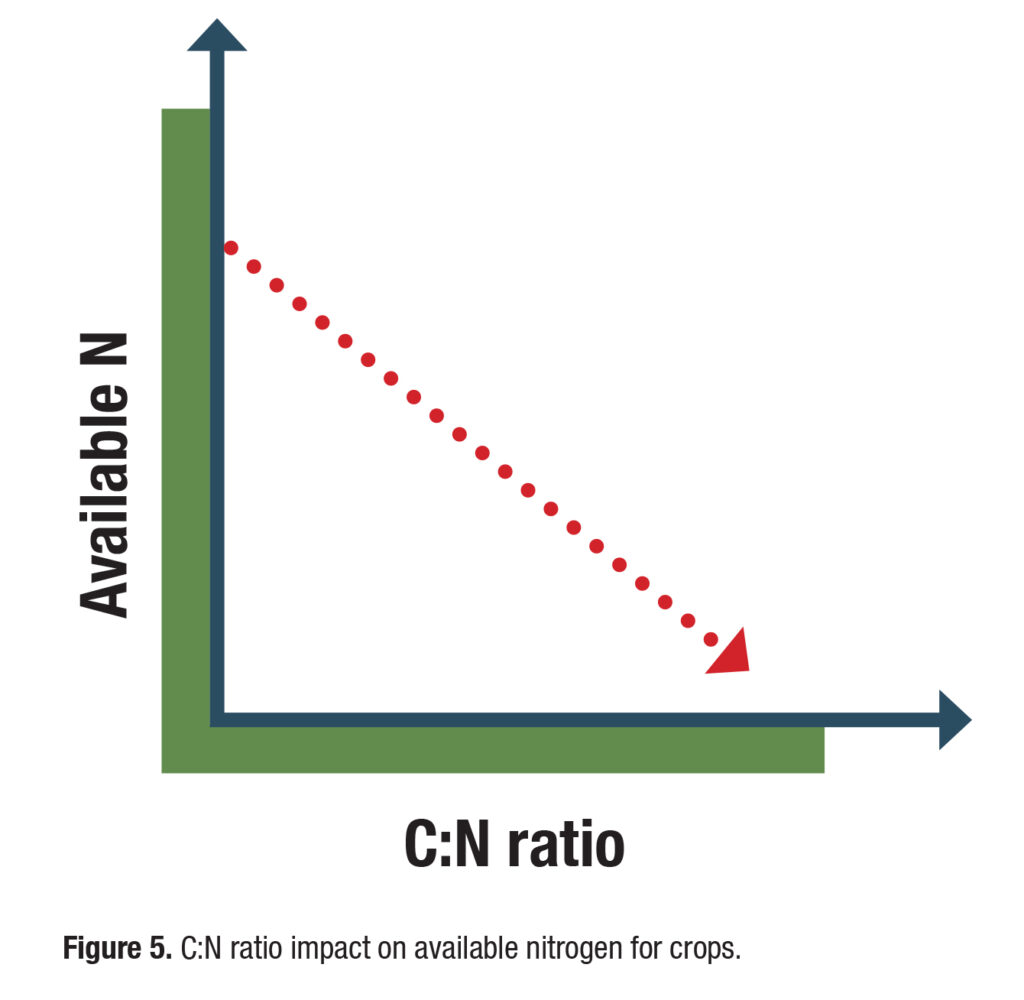Cover crops can produce nitrogen. We looked at when different species release nitrogen and the impact that adding manure has on the timing and release of nitrogen.
The simple answer
Predicting nitrogen (N) availability from cover crops is complicated. Cold and wet conditions in the spring negatively
impact soil microbial activity and can result in significant delays in N release. The type, timing and rate of manure as well as the type of cover crop and when it’s terminated also impacts N availability. Manure applied to non-legume cover crops often results in a slightly earlier release and higher amounts of N. Cover crops with manure increases N cycling and improves soil water holding capacity which often results in higher grain quality (higher protein content) and improved yield. The estimated release of N from various cover crops, with and without manure, is shown in Figure 1.
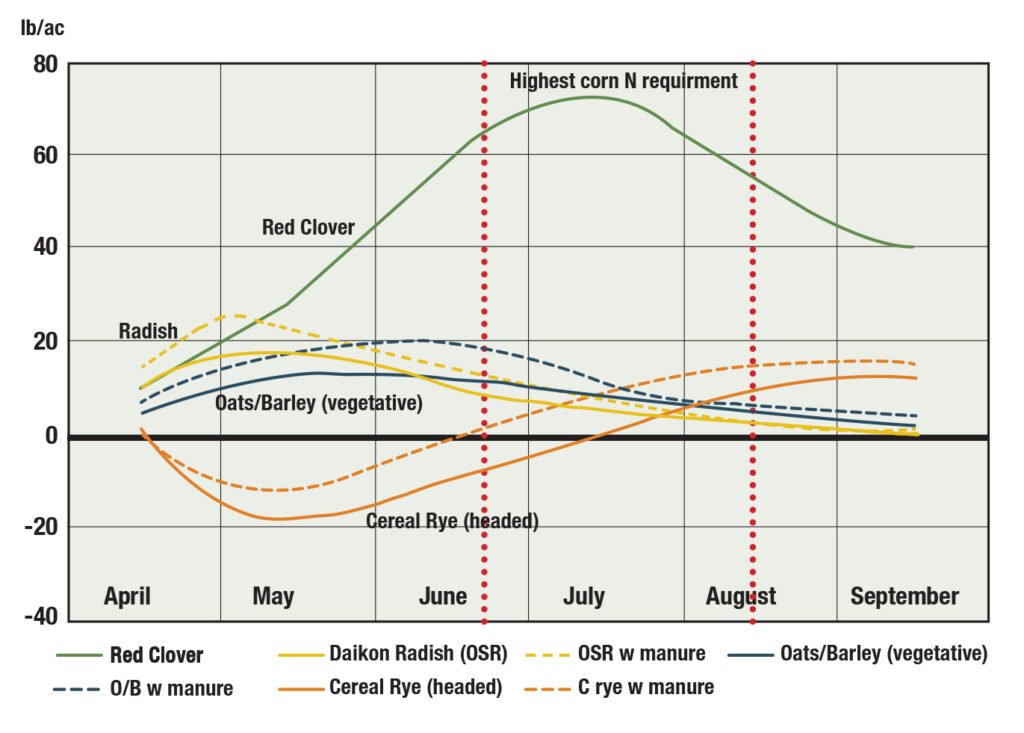
A little more information
Red clover has long been the gold standard of cover crops, when established the previous year in a winter wheat crop. Red clover provides a significant N credit for corn production. But establishing a reasonable stand can be difficult, and planting red clover after harvest does not allow for enough growth to maximize the N credit for corn. Other cover crops are much easier to grow after wheat harvest, but do they provide a reasonable N credit? Would the addition of manure be of value? Cover crops and manure work well together. Manure feeds and increases microbial populations in the soil. Microorganisms congregate near plant roots where plants provide carbon in exchange for nutrients. This symbiotic relationship contributes to increased biomass in both top growth and roots (Figure 2).
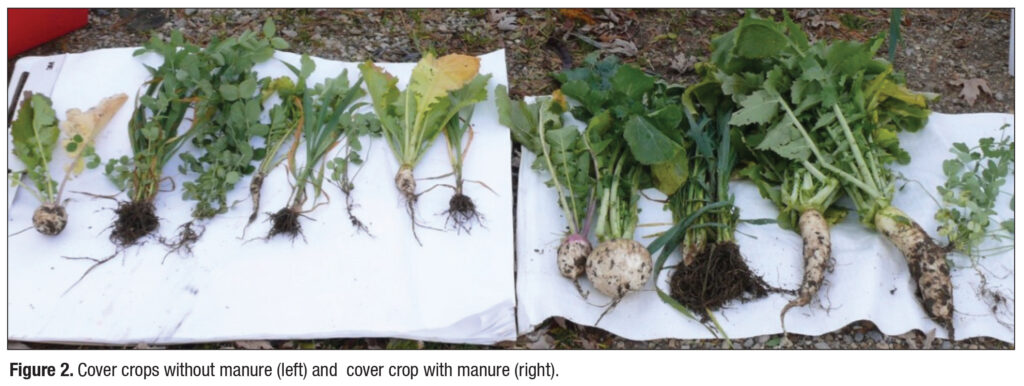
Red clover provides a reliable N supply to corn, but non-legume cover crops don’t because they don’t release N in sync with corn’s demand. Applying manure can result in slightly earlier and potentially higher – N release from cover crops, closing the gap in N supply and demand. For the past five seasons, Dr. Dave Hooker at the University of Guelph has evaluated how corn yield is affected by applying 50 lb N/acre in August to different cover crops. The only additional N was applied to corn as starter fertilizer on the planter in a 2”X 2” band (~30 lb N/acre). The combination of applying 50 lb N/acre to a cover crop (established the previous year) significantly increased corn yield compared to not planting a cover crop (Figure 3). Red clover is still the most valuable cover crop, but the combination of establishing another cover crop and applying 50 lb N/acre (from manure or a nitrogen fertilizer) is a good alternative for those that struggle to establish red clover.
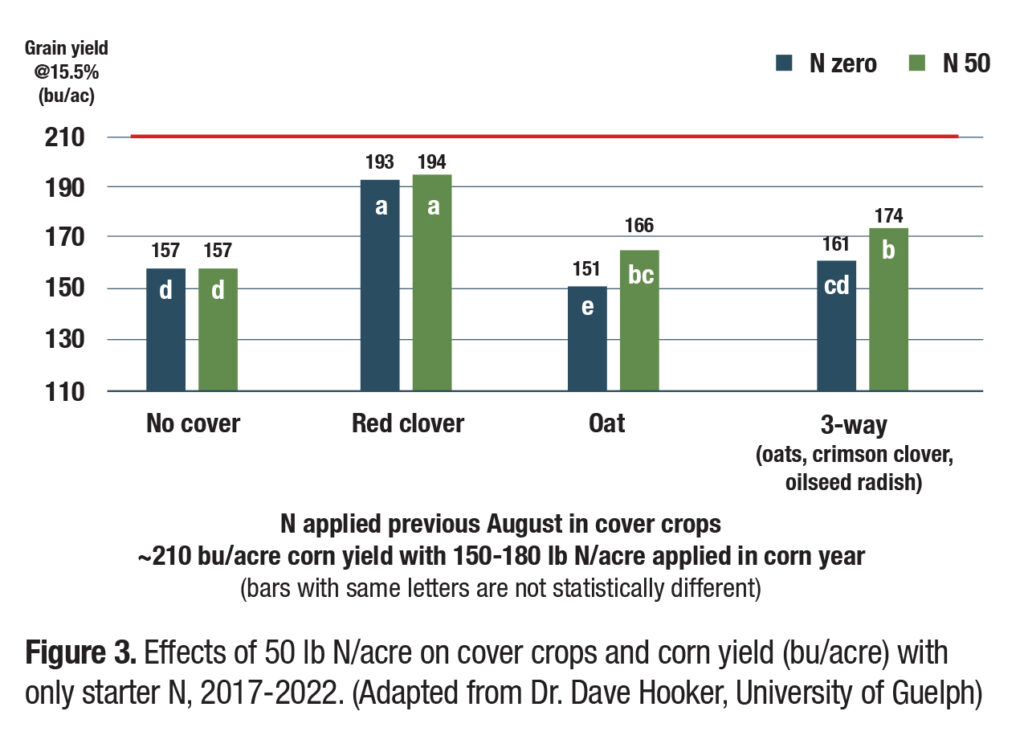
The full story
Nutrient release from cover crop biomass is determined by several factors:
- Cover crop species – legume, grass, brassica
- Stage of cover crop growth – vegetative, mature
- Type, nutrient composition and rate of manure applied – solid vs liquid
- Weather conditions in the spring
- Soil characteristics – soil organic matter, soil health
Plant biomass is made up of carbon in the form of sugars, cellulose, hemicellulose and lignin. Sugars make up a larger portion of the biomass when plants are in vegetative growth but have increasing amounts of cellulose and lignin as they reach maturity. The added manure contributes N and impacts the carbon to nitrogen (C:N) ratio of the cover crop.
Figure 4 shows the trend of C:N ratio of cover crops with and without manure. The microorganisms use N as a food source to break down carbon. The more N present in the plant material, the lower the C:N ratio. A C:N ratio above 25:1 will result in N in the soil being used to break down the carbon and creating a potential deficit in crop available N.
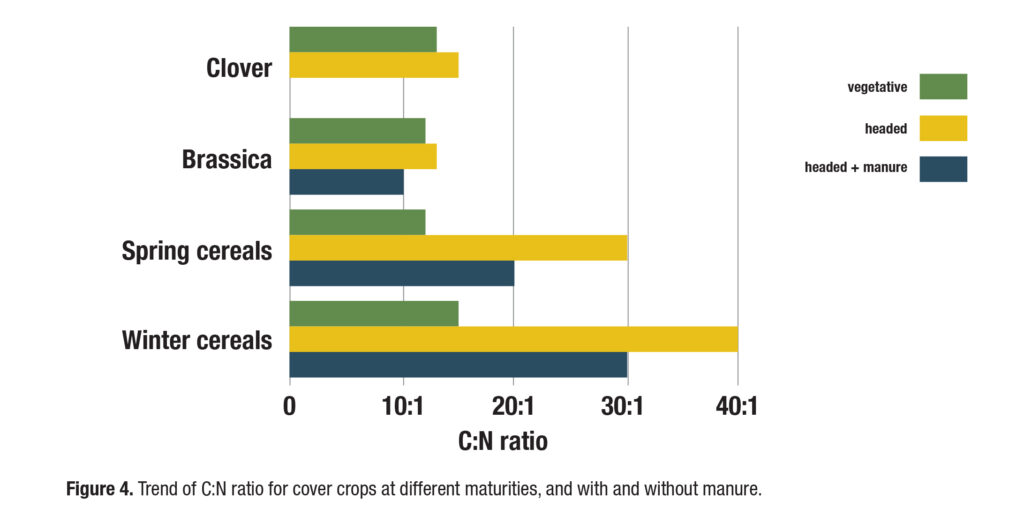
How cover crop species affects available N
Legumes (clovers, peas)
- Nodulation provides N so added manure N reduces nodulation activity and results in status quo for plant N content
- Increase in biomass from microbial activity and other nutrients often improves nutrient cycling
Brassicas (Daikon radish, oil seed radish)
- Often grown to help capture residual N from fertilizer or manure
- Added manure will increase biomass and N in the plant
- C:N ratio may not change as much as the amount of N captured in the plant, but relatively low C:N ratio will release N earlier in the season
Cereals
- C:N ratio of cereal cover crops varies with maturity
- More mature crops (heading vs vegetative growth) have higher lignin and cellulose content
- The higher the C:N ratio, the longer it takes for microorganisms to break down plant material
- When manure is applied, the plant’s N content will be higher, reducing the C:N ratio (Figure 5)
